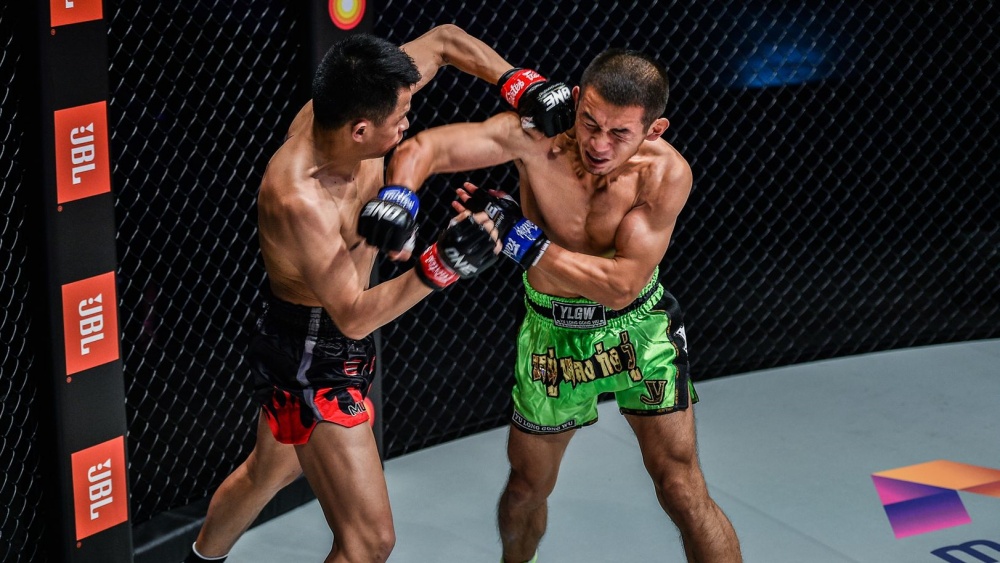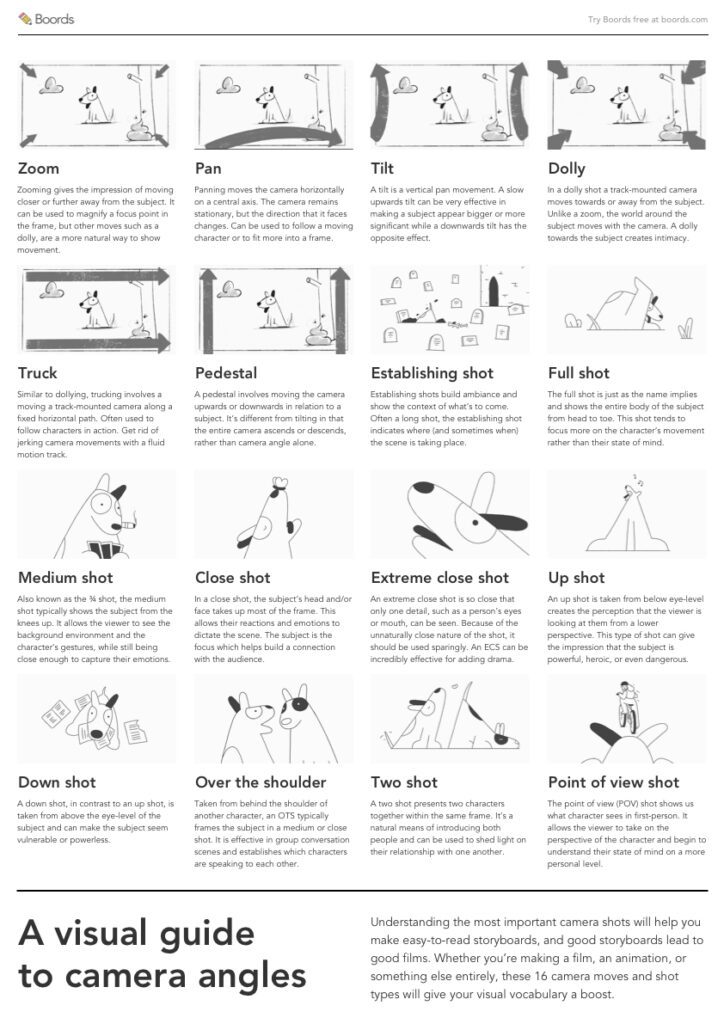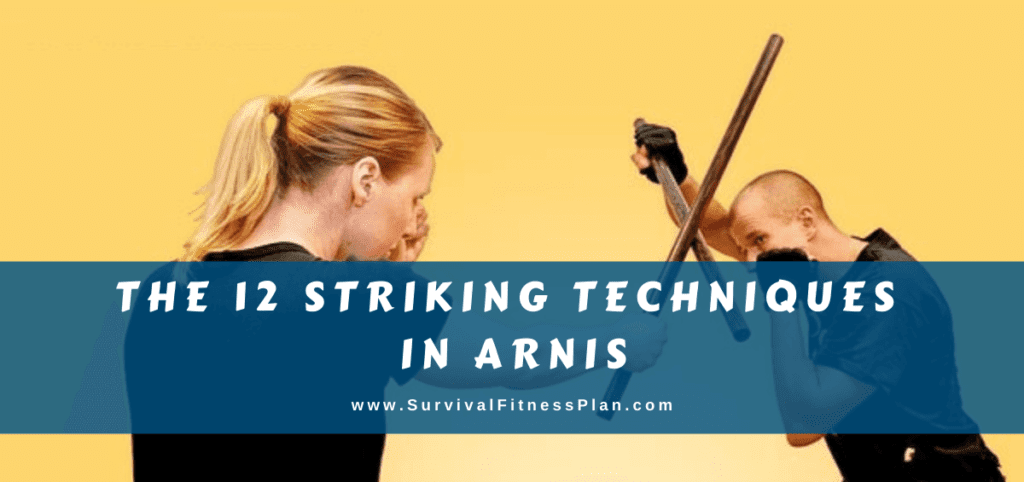Are you looking to take your striking skills to the next level? In this article, we will explore the art of utilizing angles and movement in striking. Whether you are a beginner or a seasoned fighter, understanding how to incorporate angles and movement into your strikes can greatly enhance your effectiveness in combat. By exploiting different angles and employing fluid movement, you can surprise your opponents, open up new opportunities, and increase the power and accuracy of your strikes. So, get ready to sharpen your striking game as we uncover the secrets of utilizing angles and movement in striking.
Understanding Angles in Striking
Striking in martial arts requires a deep understanding of angles and how they can be used to your advantage. Angles play a crucial role in creating openings for strikes, allowing you to effectively land blows on your opponent. By mastering footwork and body movement, you can combine angles and movement to create unpredictable patterns and timing in your strikes. In this article, we will explore the importance of angles in striking techniques, different types of angles in striking, and how angles can create openings for strikes.

The Importance of Angles in Striking Techniques
Angles are an essential element in striking techniques as they determine the trajectory and effectiveness of your strikes. By understanding how to move in relation to your opponent, you can position yourself to land powerful and accurate strikes. When you attack head-on, your opponent can see your movements and anticipate your strikes, making it easier for them to defend or counter. However, by utilizing angles, you can catch your opponent off-guard, making it more challenging for them to predict and defend against your strikes.
Different Types of Angles in Striking
In striking, there are various types of angles that you can utilize to create openings for strikes. One common angle is the “outside angle,” where you move to the outside of your opponent’s lead foot. This angle allows you to attack their exposed side, making it harder for them to defend against your strikes. Another angle is the “inside angle,” where you move to the inside of your opponent’s lead foot. This angle can be used to attack their centerline directly, allowing for powerful and accurate strikes. Additionally, lateral angles, diagonal angles, and circular angles can also be incorporated into your striking techniques to create unpredictability and confuse your opponent.
How Angles Can Create Openings for Strikes
Angles can create openings for strikes by exploiting your opponent’s defensive vulnerabilities. When you use angles effectively, you force your opponent to adjust their defense, leaving certain areas of their body exposed. By attacking these openings quickly and decisively, you can land strikes that have a greater chance of success. Angles also allow you to attack from different directions, making it harder for your opponent to anticipate and defend against your strikes. Additionally, by using footwork and body movement to create angles, you can keep your opponent off-balance and disrupt their rhythm, further increasing your chances of landing successful strikes.
Mastering Footwork and Body Movement
To effectively utilize angles in striking, you must master footwork and body movement. Your footwork plays a crucial role in positioning yourself to create angles for strikes. Proper footwork allows you to move quickly and efficiently, enabling you to change angles effortlessly during a fight. Additionally, your body movement, including your head movement and upper body positioning, also contributes to the effectiveness of your strikes. By incorporating proper body movement, you can create openings for strikes while minimizing the chances of your opponent successfully countering your attacks.
The Role of Footwork in Striking
Footwork is the foundation of effective striking. It determines your ability to move around the ring or combat area and position yourself advantageously. Good footwork enables you to maintain balance, generate power, and quickly change directions. By continuously adjusting your footwork in response to your opponent’s movements, you can create angles and exploit openings for strikes. Whether it’s using a shuffle step, pivoting, or stepping in and out, mastering footwork is essential for striking success.
Proper Body Movement and Weight Distribution in Striking
In addition to footwork, your body movement and weight distribution are crucial in striking. Proper body movement allows you to generate power and torque in your strikes, making them more devastating. By using proper weight distribution, you can transfer your body’s weight into your strikes, enhancing their impact. It is essential to maintain a balanced stance and avoid being overly committed in any particular direction, ensuring your movements remain fluid and responsive. By utilizing proper body movement and weight distribution, you can effectively create angles and capitalize on openings in your opponent’s defense.
Using Footwork to Create Angles and Openings
Footwork serves as a means to create angles and openings in striking. By moving laterally or at an angle, you can position yourself outside or inside of your opponent’s strikes, maximizing your offensive opportunities. As you move, you can shift your weight and body positioning to deceive your opponent, making it difficult for them to anticipate your next move. The utilization of footwork will not only enable you to create angles for striking but also provide you with the ability to evade your opponent’s strikes, giving you valuable defensive options.
Combining Angles and Movement in Striking
To become a truly proficient striker, it is crucial to effectively combine angles and movement in your strikes. By seamlessly blending these elements, you can create unpredictable patterns and timing, making it challenging for your opponent to anticipate your next move. This combination also allows you to set up strikes and evade your opponent’s attacks more efficiently.

How to Effectively Combine Angles and Movement in Striking
Combining angles and movement involves using footwork and body positioning to create angles while maintaining fluid and seamless transitions between strikes. By constantly changing angles and directions, you keep your opponent on their toes, making it difficult for them to defend against your strikes effectively. Additionally, by incorporating sudden changes in movement speed or intensity, you can further confuse your opponent and gain an advantage in the fight.
Creating Unpredictable Patterns and Timing Through Angles and Movement
One of the key benefits of combining angles and movement is the ability to create unpredictable patterns and timing in your strikes. By varying the angles of your attacks and the timing of your movements, you can catch your opponent off-guard and capitalize on their momentary lapses in defense. The element of surprise becomes a powerful tool when you can disrupt your opponent’s expectations, making it easier to land impactful strikes.
Using Angles and Movement to Set Up and Evade Strikes
Angles and movement can be used not only to land strikes but also to set them up and evade your opponent’s attacks. By intelligently using footwork and body movement, you can create openings in your opponent’s defense, providing opportunities to deliver powerful and accurate strikes. Additionally, by using angles and movement to evade strikes, you can avoid taking damage and counter-attack effectively. By combining offensive and defensive strategies, you become a well-rounded and formidable striker.
The Impact of Angles and Movement on Power and Accuracy
Utilizing angles and movement in striking can have a significant impact on the power and accuracy of your strikes. By understanding how to leverage these elements, you can enhance the effectiveness of your attacks while maintaining balance and stability.

How Angles and Movement Can Enhance Striking Power
Angles and movement contribute to striking power by allowing you to generate and transfer force more efficiently. By utilizing proper footwork and body positioning, you can optimize the biomechanics of your strikes. Angles create leverage, enabling you to generate more power and deliver strikes with greater impact. Additionally, movement generates momentum, adding to the force behind your strikes. By effectively combining angles and movement, you can increase the power of your strikes significantly.
Maintaining Balance and Stability While Utilizing Angles and Movement
While incorporating angles and movement, it is crucial to maintain balance and stability. Effective footwork and body movement should be fluid and controlled, ensuring that you do not compromise your balance. By staying balanced and stable, you can maintain your defensive capabilities and respond promptly to your opponent’s actions. Practicing proper footwork drills and focusing on maintaining a centered stance will help you strike with accuracy and power, even when utilizing angles and movement.
Improving Striking Accuracy Through Proper Angles and Movement
Angles and movement not only contribute to striking power but also play a vital role in improving striking accuracy. By creating angles, you can attack specific target areas that are more susceptible to strikes. Additionally, movement allows you to adjust your positioning during a strike, increasing the likelihood of landing accurately. By practicing and incorporating proper angles and movement into your training regimen, you can develop the precision and accuracy needed to consistently hit your desired targets.
Developing Strategies Utilizing Angles and Movement
To capitalize on the advantages provided by angles and movement, it is essential to develop effective strategies that incorporate these elements. By creating offensive and defensive strategies based on angles and movement, you can stay one step ahead of your opponents.
Creating Offensive Strategies Based on Angles and Movement
Offensive strategies that utilize angles and movement involve constantly changing positions and angles to confuse and overwhelm your opponent. By intelligently moving around the ring or combat area, you can create openings in your opponent’s defense and launch attacks with precision and power. These offensive strategies often incorporate a mix of feints, footwork, and changes in pace and intensity to keep your opponent guessing.
Defensive Strategies Using Angles and Movement
Defensive strategies that incorporate angles and movement involve evading and parrying your opponent’s attacks while simultaneously creating openings for counter-attacks. By utilizing footwork and body movement, you can evade strikes effectively, minimizing the chances of getting hit. Simultaneously, these defensive strategies exploit any defensive vulnerabilities in your opponent’s positioning, allowing you to counter-attack with speed and accuracy.
Countering and Capitalizing on Opponent’s Movements Through Angles
In addition to offensive and defensive strategies, angles and movement can be used to counter and capitalize on your opponent’s movements. By analyzing your opponent’s patterns and responses, you can anticipate their movements and position yourself advantageously. This can allow you to create openings by leveraging their defensive weaknesses or to capitalize on their offensive errors. By intelligently using angles and movement, you can gain a significant advantage in the fight.
Training Exercises for Angles and Movement in Striking
To master angles and movement in striking, specific training exercises should be incorporated into your training routine. These exercises focus on improving agility, coordination, and timing.

Footwork Drills to Improve Agility and Movement
Footwork drills are an essential component of training for angles and movement. These drills aim to improve your agility, coordination, and speed in moving around the ring or combat area. Exercises such as ladder drills, cone drills, and agility ladder exercises can help enhance your footwork, allowing you to move swiftly and change angles efficiently during a fight.
Shadowboxing and Bag Work Emphasizing Angles
Shadowboxing and bag work are excellent opportunities to practice and emphasize angles in your striking. During shadowboxing, visualize an opponent in front of you and work on moving around and creating angles as you throw combinations. Bag work can simulate the resistance and impact of striking while allowing you to focus on your footwork and body movement. By incorporating angles into your shadowboxing and bag work, you can develop muscle memory and build the foundation for effective angle utilization in actual sparring or competition.
Partner Drills Focusing on Timing and Coordination
Partner drills are crucial in developing timing and coordination while utilizing angles and movement. These drills involve practicing offensive and defensive techniques with a partner, incorporating footwork and body movement. By working with a partner, you can experience realistic reactions and adjust your movements accordingly. Focus on creating angles during partner drills, effectively timing your strikes and defenses to enhance your overall proficiency in using angles and movement in striking.
Common Mistakes to Avoid When Using Angles and Movement
While utilizing angles and movement in striking can bring about numerous advantages, it is essential to be aware of common mistakes that can occur. By avoiding these mistakes, you can optimize the effectiveness of your strikes and minimize unnecessary risks.
Overcommitting to Angles and Compromising Balance
One common mistake is overcommitting to angles, compromising your balance and stability. While angles are essential in striking, being overly committed to a particular angle can leave you vulnerable to counters or off-balance. It is crucial to maintain balance and stability, adjusting your movements and angles as needed while preventing overextension.
Lack of Variation in Movement Patterns
Another mistake is a lack of variation in movement patterns. If you continuously move in predictable patterns or only utilize a few angles, your opponent can quickly adapt and counter your strikes. To prevent this, incorporate a wide variety of angles and movement patterns into your training and sparring sessions. By embracing versatility and constantly changing your approach, you can keep your opponent guessing and maintain your advantage.
Neglecting to Adapt to Different Fighting Styles
Neglecting to adapt your angle utilization and movement to different fighting styles can be a significant mistake. Each martial art and each opponent brings unique strengths and weaknesses. By failing to adapt your angles and movement to exploit these specific characteristics, you miss opportunities to gain an advantage. It is essential to study and understand different fighting styles, adapting your angle utilization accordingly to maximize your chances of success.
Analyzing Striking Techniques of Elite Fighters
Elite fighters provide a valuable source of inspiration and learning. By examining how top fighters utilize angles and movement in their striking, you can gain insights and apply their techniques to your own training and fighting style.
Examining How Top Fighters Utilize Angles and Movement in Their Striking
Top fighters across various martial arts consistently showcase the effective use of angles and movement in their striking. By studying their footwork, body movement, and striking patterns, you can gain a deeper understanding of how to incorporate angles and movement into your own style. Analyze their head movement, footwork transitions, and overall positioning to identify specific strategies that can be adapted to enhance your own striking techniques.
Breakdown of Specific Techniques Used by Elite Strikers
When analyzing elite strikers, it is essential to break down and understand specific techniques that contribute to their success. Pay close attention to how they create and utilize angles, the footwork patterns they employ, and the timing and combination selection they utilize to land impactful strikes. By studying and practicing these specific techniques, you can improve your understanding of angles and movement in striking and enhance your overall performance.
Learning from the Best and Incorporating Their Strategies
Learning from the best fighters and incorporating their strategies into your own training and fighting style is a proven path to success. By studying and emulating the effective use of angles and movement demonstrated by top fighters, you can refine your skills and tactics. However, it is important to remember that these techniques need to be adapted and integrated in a way that suits your own strengths and objectives. It is through this process of learning and personalization that you can truly excel in utilizing angles and movement in striking.
The Role of Angles and Movement in Different Martial Arts
Angles and movement play a significant role in various martial arts, each with its own unique approach and emphasis. Understanding how angles and movement are utilized in these martial arts can provide valuable insights into the broader applications and benefits of this concept.
How Angles and Movement Are Utilized in Muay Thai
In Muay Thai, angles are crucial in creating openings for strikes and efficiently evading the opponent’s attacks. By using lateral and circular footwork, and incorporating side steps and pivots, Muay Thai practitioners can create angles to attack vulnerable areas such as the liver, chin, or ribs. Muay Thai fighters also employ explosive bursts of movement and intricate combinations to overwhelm opponents, making angles and movement an integral part of their striking arsenal.
The Importance of Angles in Boxing
In boxing, angles are essential for effectively landing strikes while minimizing the opportunities for counters. Boxers use footwork and head movement to create angles that enable them to deliver punches from different directions, making it harder for their opponents to defend or counter. By utilizing angles to attack the sides and rear of the opponent, boxers can exploit openings and increase the effectiveness of their strikes.
Footwork and Movement in Karate and Taekwondo
Karate and Taekwondo also place a strong emphasis on footwork and movement. Both martial arts utilize angles to generate power and create opportunities for strikes. By incorporating dynamic footwork and swift changes in direction and distance, practitioners can create angles that optimize the impact of their strikes. The ability to move quickly and efficiently is essential for both offensive and defensive maneuvers, making footwork and movement integral to the success of these martial arts.
The Psychological Advantage of Angles and Movement in Striking
Beyond the physical benefits, angles and movement in striking also provide significant psychological advantages. By confusing and frustrating opponents, building confidence, and enhancing mental control, effective use of angles and movement can give you an edge in combat.
Confusing and Frustrating Opponents Through Angles and Movement
One of the primary psychological advantages of angles and movement is the ability to confuse and frustrate opponents. By constantly changing angles and directions, you disrupt their expectations and rhythm, making it difficult for them to anticipate or mount effective defenses. This confusion and frustration can lead to opponents making mistakes or becoming more hesitant in their attacks, giving you a substantial advantage.
Building Confidence and Control with Effective Use of Angles
Using angles and movement effectively can also build confidence and a sense of control in a fight. When you are able to consistently land strikes from advantageous angles while avoiding your opponent’s attacks, you establish dominance and gain confidence in your ability to control the outcome of the fight. This confidence can translate into increased focus, composure, and the ability to execute techniques with precision and power.
The Mental Benefits of Training Angles and Movement in Striking
Training angles and movement in striking not only enhances physical attributes but also provides mental benefits. By honing your ability to utilize angles and movement, you develop mental agility and adaptability. This mental flexibility allows you to quickly analyze and adjust to the changing dynamics of a fight, making you more effective in exploiting opportunities and overcoming challenges. Additionally, the focus and discipline required in training angles and movement can improve mental clarity and concentration, giving you an advantage in combat situations.
In conclusion, understanding and utilizing angles and movement in striking is vital for any martial artist looking to enhance their skills. By comprehending the importance of angles in striking techniques, exploring different types of angles, and learning how angles create openings for strikes, you can maximize your offensive capabilities. Mastering footwork and body movement enables you to combine angles and movement effectively, creating unpredictable patterns and timing in your strikes while maintaining balance and stability. The impact of angles and movement on power and accuracy allows you to generate stronger and more precise strikes while remaining agile. Developing strategies and training exercises that incorporate angles and movement provides you with the tools to outsmart and outmaneuver your opponents. By studying elite fighters, understanding the role of angles and movement in different martial arts, and capitalizing on the psychological advantages provided by angles and movement, you can elevate your striking abilities and become a formidable force in combat.

